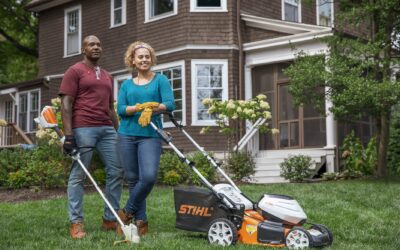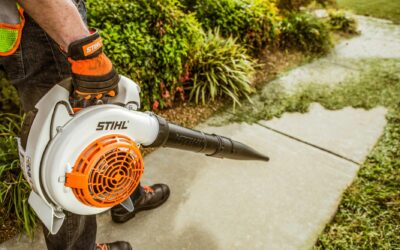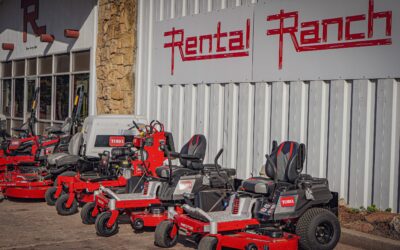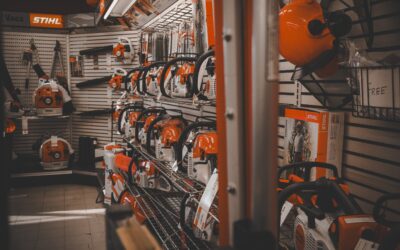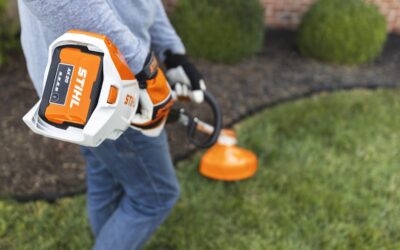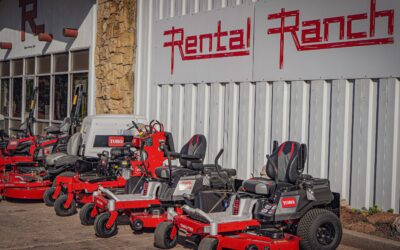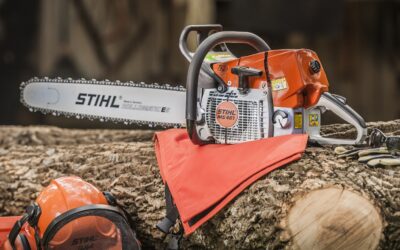Rental Ranch
About Us
Wichita, Kansas since 1966
About Out
Rental Ranch
Rental Ranch is an independently family owned business founded in 1966 by Melvin and Opal Redburn as a franchise under the name United Rent-All. Originally it was only equipment rental with everything from sewer snakes and tools to hospital beds and china. The Redburn’s purchased the franchise in the early 1970’s and changed the name to Rental Ranch.
Now winding down the second generation of ownership by Mel Redburn and late wife Cathy, their son Darren is moving the Redburn’s into the third generation of local ownership. We still rent a lot of homeowner “do-it-yourself” equipment, lawn maintenance and light contractor equipment as well as sales, service and parts for outdoor power equipment such as lawn mowers, weed trimmers, chain saws, and many other types of two-cycle and small engine equipment.
Mel began at the Rental Ranch at the age of twelve helping out on the weekends and after school. He learned to do a little of everything. In the summers when most kids were playing baseball, Mel was tinkering with engines and picking up mechanical tips from the “older” guys. Mel took over ownership from his father in the mid 1980’s.
Darren started even younger than his father, Mel. Darren loved to come to “the Ranch” as a toddler. As Darren grew older, he got a degree from Pittsburg State Auto-Tech Program. However, he served our county for nine years in law enforcement before taking over since the sudden passing of his mother, Cathy. Returning to the family business Darren is brings a knowledge of our past and vision to the future.
Doing business with a locally owned company gives you access to the owners. Mel and Darren are at the Rental Ranch more often than not, and are happy to meet with and listen to the needs of our customers.
About Us
Rental Ranch
FAQ’s
Is Battery Powered Lawn Equipment Right For You?
When you’re shopping for lawn equipment, there are several key factors you’ll want to consider. After all, it’s crucial to choose the right tool for the job at hand. At the same time, we all have different priorities and preferences when it comes to our yard care routine. We can all probably agree that convenience plays an important role in the decision-making process. As you browse the market, you’ll find a variety of different options, from gas-powered to battery-powered tools. Whether you’re shopping for mowers or chainsaws, there’s plenty of reasons to consider a cordless, battery-powered model.
Battery-powered equipment has made major strides in this area in recent years. Batteries are bigger and provide more watt hours, stronger power, longer run time, and so on. In fact, It’s not uncommon to find a battery-powered mower or chainsaw with performance that’s comparable to a gas model.
With battery powered equipment, there is far less noise and vibration as well as lighter in weight and easier to manipulate. Many industry leaders are becoming more environmentally conscious and creating electric equipment for various reasons. such as you won’t have to use or pay for fuel, mix oil, or pull a cord. If you’re confident that your workload is manageable with cordless equipment, why not make the switch? Consider how much run-time you need for your tasks and go from there.
For more information, be sure to stop by Rental Ranch in Wichita, KS today! We proudly serve the Newton, Andover, Derby, and Hutchinson communities in South-Central Kansas.
Why Shop With An Independent Dealer?
When you make a conscious decision to shop with independent dealers, you’re supporting locally-owned and operated businesses. But what you’re also doing is supporting your community, the economy, and the environment in numerous impactful ways. For starters, your neighbors, friends, and family members are the very people running these types of business. They genuinely care about the future of your community.
It’s also worth noting that small businesses make about twice the amount of donations per employee to charitable organizations than large businesses. The economy benefits from your support of independent dealers and other local businesses, too. Believe it or not, small businesses employ 77 million Americans. When you shop independent, you’re also contributing to a smaller carbon footprint.
If you’d like to learn more about the cause, be sure stop by your local independent dealer, Rental Ranch in Wichita, Kansas. We proudly serve the Newton, Andover, Derby, and Hutchinson communities in South Central Kansas.
Battery Equipment for You?
When you’re shopping for lawn equipment, there are several key factors you’ll want to consider. After all, it’s crucial to choose the right tool for the job at hand. At the same time, we all have different priorities and preferences when it comes to our yard care routine.
We can all probably agree that convenience plays an important role in the decision-making process. As you browse the market, you’ll find a variety of different options, from gas-powered to battery-powered tools. Whether you’re shopping for mowers or chainsaws, there’s plenty of reasons to consider a cordless, battery-powered model.
Battery-powered equipment has made major strides in this area in recent years. Batteries are bigger and provide more watt hours, stronger power, longer run time, and so on. In fact, It’s not uncommon to find a battery-powered mower or chainsaw with performance that’s comparable to a gas model.
With battery powered equipment, there is far less noise and vibration as well as lighter in weight and easier to manipulate. Many industry leaders are becoming more environmentally conscious and creating electric equipment for various reasons. such as you won’t have to use or pay for fuel, mix oil, or pull a cord. If you’re confident that your workload is manageable with cordless equipment, why not make the switch? Consider how much run-time you need for your tasks and go from there.
For more information, be sure to stop by Rental Ranch in Wichita, KS today! We proudly serve the Newton, Andover, Derby, and Hutchinson communities in South-Central Kansas.
When Should You Power Rake Your Lawn?
Lawns should be power raked if the thatch layer is thicker than about a half inch. Because it’s difficult to tell just by looking at the surface of the lawn, remove a small section (about 2-3 inches deep) with a shovel and look at the profile for thatch buildup between the soil and grass.
Thatch is a mat of dead grass, stems, and roots gathered just above the soil, and occurs from a lack of microbial activity in the soil. A thin layer of thatch (¼ inch or so) can be good for your lawn because it insulates the soil and holds moisture longer. However, too much thatch can prevent water from reaching the soil and cause grass to root in the thatch layer instead of rooting in the soil.
A power rake is a machine that uses blades similar to a roto-tiller to remove thatch and debris that can build up on a lawn. Power raking is gentler than dethatching since it only removes debris at the soil level (whereas dethatching also pulls and removes healthy root systems).
When is the Best Time of Year to Power Rake Your Lawn?
Most lawns should be power raked in the late winter or early spring, before the grass begins to green up. Cool-season grasses, such as bluegrass, should be power raked in the early fall. Power raking outside of these times can potentially damage your lawn by removing living turf during growing season.
Why Should You Power Rake Your Lawn?
Power raking is great for removing dead matter and aeration. Because only the thatch layer is targeted, waste is removed without damaging the healthy grass allowing faster recovery. Removing this thatch layer will enable your lawn to breath easier and root deeper.
When you’re ready to remove the thatch layer from your lawn, we have a power rake rental ready for you! And don’t forget to check out our rotary spreaders and verti-cutters to help with your seeding. Give us a call today at (316) 838-4211!
Help Your Garden Survive the Kansas Summer.
The Kansas summer brings sweltering heat and arid climate that threatens our gardens every year. If your garden has been consistently losing the battle with the Kansas summer, try some of these techniques to help your crops cope.
ADEQUATE MOISTURE
Kansas winds combined with high temperatures can leave our gardens extremely thirsty. Of course we should water, but how much and how frequently? Most gardens need about an inch each week. This soaks the root zone about 4-6 inches deep. Early morning watering is preferred since the air is cooler and the water is less likely to evaporate. Drip irrigation hoses are an efficient way to keep the soil moist throughout the day without soaking the foliage. Monitor your garden frequently and respond to any signs of stress.
PREVENTING PESTS
Dealing with pests in the summer is an inevitable part of gardening. Be preventative as much as possible to avoid spraying chemicals. Weak plants attract predators and should be removed from your garden. Use compost to build healthy and organic soil that helps develop strong plants. Keep the garden clear of debris and weeds to minimize insect habitats. Barriers, such as row covers and cloches, are a more direct way of repelling pests by completely blocking their access.
OTHER TIPS
Get the most out of your water usage by adding a layer of mulch or placing a shade cover over or near your garden to reduce evaporation and protect from the wind. Regularly pull any weeds, as they compete with your plants for water. Fertilizer stimulates growth which can cause stress under extreme summer conditions and should not be used on wilted or browned plants (wait until October to fertilize).
Summer is a time to kick back, relax, and enjoy all the hard work you’ve put into your flower or vegetable garden. Rental Ranch has plenty of tools and equipment to help you prepare for the extreme conditions so your garden can survive the Kansas summer. Check out our lawn and garden equipment available to rent.
Verticutting vs. Aeration?
With seeding season on the horizon, it’s important to know the two most common methods to achieve a lush lawn. Aeration and verticutting work in different ways, yet sometimes together, to help create the look you desire for your grass. These two methods can often be confused with one another, so it’s helpful to know the difference before you start working on your lawn.
Verticutting
Verticutting can be compared to the process of mowing the lawn. A verticutting machine has several vertical blades, as opposed to one horizontal blade, which cut grooves into the dirt. The more grooves you have in the soil, the better seed to soil contact. The better seed to soil contact, the better results you’ll achieve from overseeding. Verticutting is highly recommended for most lawns prior to overseeding. Verticutters loosen the topsoil so that seed will have better contact with the soil for germination. This is recommended in September to give the seed the maximum amount of time to germinate.
Verticutting works to minimize thatch, which is a layer of dead roots and stems that build up on the lawn, causing a barrier that makes it difficult for grass to obtain necessary nutrients and moisture. Small amounts of thatch can be beneficial by reducing compaction in high traffic areas, but when it exceeds a half-inch, verticutting is needed.
The process should be done in two passes. Once to remove the thatch and slice, and again to spread the seed. The seed can either be applied before or after the verticutting process.
Aeration
Aeration involves puncturing the soil with small holes to allow air, water and nutrients to permeate the grass roots. This is done so that grass seeds will create a strong root structure and better results will be obtained after overseeding. The main goal of aeration is to loosen compacted soil, therefore this must be done before the seed to your lawn is applied. This will help the grass roots grow deeply and produce a stronger, more dense lawn. Typically, aeration is recommended once a year in the fall season.
After you aerate, leave soil plugs in place to decompose. These cores will help minimize thatch. After the plugs dry, run over them the next time you mow as this will break them up. You can then fertilize and seed the lawn immediately following aeration.
How Often Should you Sharpen your Lawn Mower Blades
To maintain a healthy, green lawn all summer, it’s important to check your mower blade every few weeks to make sure it’s sharp and free of damage. This is will help keep your grass healthy by cutting cleanly, making it easier for the plants to recover. In most cases, a lawn mower blade can be sharpened several times before it has to be replaced, and it’s relatively inexpensive to buy a new one.
When to Sharpen or Replace Mower Blades
For a typical homeowner, the mower’s blade will need to be sharpened at the beginning and middle of the mowing season. If you have an exceptionally large yard or you mow over any debris like branches, toys, glass or metal, your blade may need extra sharpening, or you may need to replace it during the season. If you notice your mower blade has become very thin and weak, replace it immediately. Over time, the metal can weaken as it’s eroded by dirt, sand and other debris from your yard. This can cause the blade to break while you’re mowing, possibly injuring people nearby if pieces of metal fly out of the mower.
How to Tell if Your Mower Blades Need Sharpening
After you mow, take a look at your lawn. If you see missed patches or uneven spots, a dull mower blade could be to blame. A sharp lawn mower blade will cut the grass at the same height in one pass. Another sign is if the grass blades are torn at the ends. A sharpened mower blade will cut the grass cleanly, while a dull blade tears it. This can damage your lawn’s health and even cause it to turn from green to brown.
Of course, you should also inspect the mower blade itself. Look for inconsistencies, dents and chips in the cutting edge. Many of these imperfections can be smoothed out with regular sharpening, but if there are larger nicks or it’s bent, the blade will need to be replaced.
How to Sharpen a Lawn Mower Blade
Whether you have a riding or push mower, check your owner’s manual before starting any repairs or maintenance. This is especially important if it’s under warranty, because it may require you to have the work done by a professional.
Before starting any work on your mower, be sure to remove the spark plug. This will prevent it from accidentally starting on its own.
- Remove the mower blade.
If you have a lawn tractor or riding mower, using a mower lift will help you safely access the blade. For a push mower, you can either set it on its side or use a mower jack to get to the blade. Be sure to keep the air filter up so gas and oil doesn’t leak out.Before removing the blade take a picture with your phone, or note which direction it’s facing, so you can put it back on the same way. To stop the blade from turning so you can loosen the bolts, clamp it in place or put a piece of scrap wood between the end of the blade and the mower deck. Use a socket wrench or adjustable wrench to remove the bolt in the middle of the mower blade.
- Clean underneath the mower deck.
Use a putty knife to scrape out any accumulated grass, dirt and other yard debris. - Sharpen the mower blade.
Clamp the blade in place with a c-clamp and block of wood, or in a bench vise. Use a flat medium file to remove nicks in both sides of the edges. You can remove burrs and nicks from the flat side of the cutting edge by very lightly filing it. The flat side of the blade should not have a bevel, so keep the file flat.On the beveled side of the cutting edge, use the medium-toothed file in even strokes, following the blade’s original bevel. To keep the blade in balance, make sure each edge gets the same number of strokes.
- Check for balance.
If you remove more metal from one edge than another, the blade will be out of balance, which can cause the mower to vibrate and cut unevenly. To test for balance, place the blade on a blade balancer, screwdriver handle or dowel. If it’s in balance, the blade will lie flat, but if one side is lower, it needs a little more sharpening to remove excess metal. - Replace the mower blade and spark plug.
Make sure the blade goes back on the same way, and that you secure it tightly so it won’t come off while you’re mowing.
If you’d rather just replace your mower blade, or you’d rather have a professional take care of the sharpening for you, contact Rental Ranch in Wichita at 316-838-4211.
Lawn Mower Maintenance Tips
Regular maintenance will keep your lawn mower working at its best and your lawn looking great for years to come. At Rental Ranch, we recommend a full service each spring and basic maintenance in the fall for both riding and push mowers.
Annual Spring Mower Maintenance Tips:
Change the Oil
Regular oil, oil filter, and fuel filter changes will help your mower run smoothly and prevent costly repairs. Check your user manual for recommendations. Most mowers recommend oil changes every 25 hours, which roughly translates to once a year.
Clean Out the Mower Deck
Keep debris from building up and causing problems by using a putty knife and a wire brush to scrape off caked-on mud and grass. If you do this again at the end of the mowing season, your mower will be clean and ready to go in the spring.
Clean or Replace the Air Filter
Cleaning or replacing the air filter on your lawn mower allows the engine to operate more efficiently. A paper accordian-style air filter can be removed and blown out with an air compressor. If the filter is still clogged after blowing it out, you’ll need to replace it. If your mower has a foam filter, wash it with water and a little dish soap. Let it dry before reinstalling.
Change the Spark Plug
Replacing a spark plug is one of the easiest tasks of lawnmower maintenance. Remove the spark plug with a ratcheting socket driver and spark plug socket. Then, clean around the area and install the new spark plug.
Sharpen the Blades
Sharpen your mower blade before the first cutting of the season. If you don’t cut with a sharp blade, you’ll tear the grass, leaving brown tips on the ends of the blades. Read our blog post on mower blade sharpening for details on how to do it yourself, or you can replace the blade or have it professionally sharpened. Be sure to check the blade about once a month during mowing season to see if it’s getting dull.
Inspect Discharge Chute for Damage or Holes
Fall Mower Maintenance
Before storing your lawn mower for the winter, it’s a good idea to clean out from underneath the mower deck and drain the fuel. This is also a good time to make sure your mower blade is sharp and ready for spring.
If you need help with lawn mower maintenance or repair in the Wichita area, Rental Ranch has skilled technicians who can service all makes and models of riding and push mowers.
Lawn Mower Buying Guide
The right equipment can make mowing your lawn a breeze. If you’re shopping for a new lawn mower, the size of your lawn, the terrain and the layout should determine what kind of mower you choose.
Push Mowers
Push mowers are affordable and ideal for smaller lawns that are about 4,000 square feet or less. Also called a walk-behind mower, they’re easier than riding lawn mowers to maneuver around obstacles like trees. When selecting a push mower, you should consider the size of both the cutting deck and the engine. A typical push mower cuts a 22-inch swath. Engine sizes range from 140cc to 190cc. Unless you need to cut wet or high grass, a quality 140cc engine will work for most home owners. The majority of push mowers are gas powered, however, electric options are available as well. Many walk-behind mowers also come with bagging or mulching capabilities to make it easier to deal with grass clippings.
Self-propelled Mowers
Self-propelled are simply walk-behind mowers with the added advantage of a drive system to help power them across your yard. Since they’re less physically demanding to use, self-propelled mowers are a better fit for larger lawns that are around 4,000 to 6,000 square feet. They’re available in front-wheel, rear-wheel, and all-wheel drive. A front-wheel drive mower is great if you have a lot of trees or other obstacles to mow around, because you can just tilt the mower back to swing it around corners. A rear-wheel drive mower is best used for hills or uneven ground, where it gets better traction than a front-drive model.
Lawn Tractors and Riding Lawn Mowers
For bigger lawns that are over half an acre, traditional riding lawn mowers and lawn tractors are ideal. Newer models come with a front engine, but some older models have a rear engine. Both are gas-powered and are priced comparably. Front engine mowers are typically larger, but if storage space is a factor, rear engine mowers take up less space. However, rear engine mowers usually lack some added features like a fuel gauge or high seats. You can find models with a cutting deck from 42 to 48 inches, although some can cut a wider swath. Clippings can be bagged, side-discharged or mulched. Other tools can be attached to allow you more options for using your lawn tractor besides just mowing. If you need to better maneuverability for tighter turns, four-wheel drive is also an option.
Zero-Turn Radius Mowers
Zero-turn radius (ZTR) mowers offer the same benefits of traditional riding mowers, plus better maneuverability. Most ZTR mowers have levers, which control the rear wheels separately, instead of a steering wheel. They’re called zero-turn radius because you can actually turn such a tight circle with them that you stay in one place. They’re more expensive than lawn tractors but offer the same capabilities for bagging, mulching and side-discharging clippings. Typical cutting swath is 42 to 50 inches. ZTR mowers do require some practice to learn how to drive, and they can be difficult to handle on hills. During turns, the rear wheels can tear up your grass.
Rental Ranch is Wichita’s Best Source for Lawn Mowers
We’re authorized dealers for several major brands of mowers, such as TORO mowers. We also carry commercial mowers and offer service and parts to keep your equipment running smoothly for years to come. Come in and see us today!
How Often Should I Mow My Lawn?
When it comes to mowing, many homeowners just pick a time frame. Mowing your lawn too much or too little can ruin your lawn and waste all the time, money, and effort you put into it.
Follow the One-Third Rule
The short answer is to mow when your lawn needs it, and to never cut more than one-third of the length off of the grass blades. So, if you want to cut your lawn down to a 3-inch height, you should let the grass grow to 4 – 4.5 inches before you mow. If your grass grows quickly, you’ll have to mow more often; less mowing is required when the grass is dormant or slow-growing.
These factors can affect how quickly your grass grows, and often to mow your lawn:
Weather and Seasons
Here in Kansas, warm-season grasses are common. They grow faster in the summer compared to the rest of the seasons. Cool-season grass grows faster in the spring or fall seasons. When your lawn grows fast, you may have to mow every 3 – 5 days, but you could stretch that out to about once every 7 – 10 days during periods of slower growth. You should be able to stop mowing for a few weeks or months during the winter.
Watering and Rainfall
Grass grows faster when it’s watered more, and many homeowners unknowingly over-water their lawns. Using the correct watering frequency and amount will encourage deep root growth, conserve water, help your grass withstand drought, and allow you to mow less frequently. When it rains you will likely need to mow more often. Just be sure to wait for the grass to dry out before you mow, to prevent damage to your mower and your lawn.
Fertilization
Fertilizing your lawn will lead to faster growing grass, so plan to mow more often after using fertilizer.
Desired Length of Grass
When you need to mow and how often is also dependent on how long your grass should be. Cutting your grass too short can “scalp” your lawn and cause brown spots. Different types of grass have different ideal lengths, usually ranging from 1 to 3 inches. Research the ideal length for your grass type, then use the one-third rule to decide when to mow.
For lawn care information specific to Wichita and the surrounding area, the Sedgwick County Extension Office offers classes and online articles that are full of valuable tips and resources.
What’s the Difference Between a Tiller and a Cultivator?
Here at Rental Ranch, we have both roto-tillers and cultivators available to rent and we also sell STIHL cultivators.Tillers and cultivators are often mistaken for one another, but each serves a different purpose. Before buying or renting either piece of equipment, it’s important to understand when you should use a tiller and when to use a cultivator.
What is a Tiller?
Tillers have strong motors and come in both front and rear tine models. Rear tine tillers have tines that are behind the motor. Rear tine tillers are relatively easy to maneuver, can dig deep and are great for tilling a large area. Front tine tillers have tines in front of the motor. They’re generally used for smaller gardens that don’t have as many roots or weeds to contend with.
When Should a Tiller be Used?
Garden tillers are used to break up hard ground and prepare the garden bed for planting. Tilling is essential for new garden beds and should really be considered a requirement. Your soil health is greatly improved by tiling and it makes planting seeds easier. By turning over the earth, you bring fresh soil to the surface and increase the amount of moisture your plants will receive.
What is a Cultivator?
A cultivator has smaller tines and a less powerful motor than a tiller, so it’s not meant to break ground. Trying to till your soil with a cultivator would make for a long, tough day. Cultivators can be either gas powered or corded and cordless electric.
When Should a Cultivator be Used?
Cultivators should be used for mixing soil that’s already been broken up, such as when compost or fertilizer is added after tilling and before planting. Cultivators can also be used after planting to control weeds. Cultivating after your plants have broken through will also help the new shoots gain access to water and other nutrients as they grow.
Whether you need to buy or rent a tiller or cultivator, the Rental Ranch staff is happy to help you find the right tool and show you how to use it.
Blog
Tackle Home Improvement Projects Before the Holidays with Rental Ranch
Introduction to Home Improvement Before the Holidays As the holiday season swiftly approaches, many homeowners find themselves contemplating the various home improvement projects they’ve been postponing. The allure of hosting festive gatherings in a...
Last Call for Fall Cleanup with Rental Ranch Equipment
Understanding the Importance of Fall Cleanup for Your Lawn The transition from summer to fall brings a cascade of vibrant foliage, which, while beautiful, can create a substantial task list for homeowners. The importance of fall cleanup cannot be overstated when it...
Trust Rental Ranch for Your End-of-Season Winter Service
Understanding the Importance of Winter Service for Your Equipment Winter can be a demanding season for outdoor power equipment, and preparing your tools for these conditions is crucial. During the colder months, machinery can suffer from a multitude of issues such as...
How Rental Ranch Can Help with Fall Yardcare Equipment
Understanding the Importance of Fall Leaf Management The golden hues of autumn leaves create a picturesque landscape, but when these leaves carpet your lawn, they can pose significant challenges for homeowners. Understanding the importance of fall leaf management is...
Prepare for Winter Aerate Your Lawn with Rental Ranch
Importance of Lawn Aeration for Seasonal Preparation As the seasons change, particularly moving into the colder months, preparing your lawn for winter becomes a critical task. One of the most beneficial yet often overlooked practices is lawn aeration. Aerating your...
Preparing Battery-Powered Equipment for Winter Storage
Introduction to Battery-Powered Equipment Storage for Winter As the vibrant hues of autumn give way to the chill of winter, it's time to prepare your battery-powered equipment for hibernation. Proper storage is crucial to maintaining the longevity and efficiency of...
5 Warning Signs Your Lawnmower Needs Service Now
Introduction to Lawnmower Maintenance and Its Importance Owning a lawnmower is a commitment to both convenience and responsibility. These machines transform a potentially arduous task into a manageable chore, enabling homeowners to maintain a lush, well-manicured lawn...
Essential Fall Equipment Maintenance Checklist for Outdoor Power Tools
Introduction to Outdoor Power Tools Maintenance for Fall As the vibrant hues of summer give way to the crisp, golden tones of fall, it's time to turn our attention to maintaining the outdoor power tools that have served us so well throughout the year. Ensuring that...
Top 5 Must-Have Power Tools for September Yard Work
Introduction to Essential Power Tools for Fall Cleanup As the vibrant hues of summer fade into the crisp embrace of autumn, the task of preparing your yard for the coming season becomes paramount. Fall brings with it a unique set of challenges for yard maintenance,...
Real Stories – Real Relief


Braxton Hill

Don Gabel

Angie Tejeda


